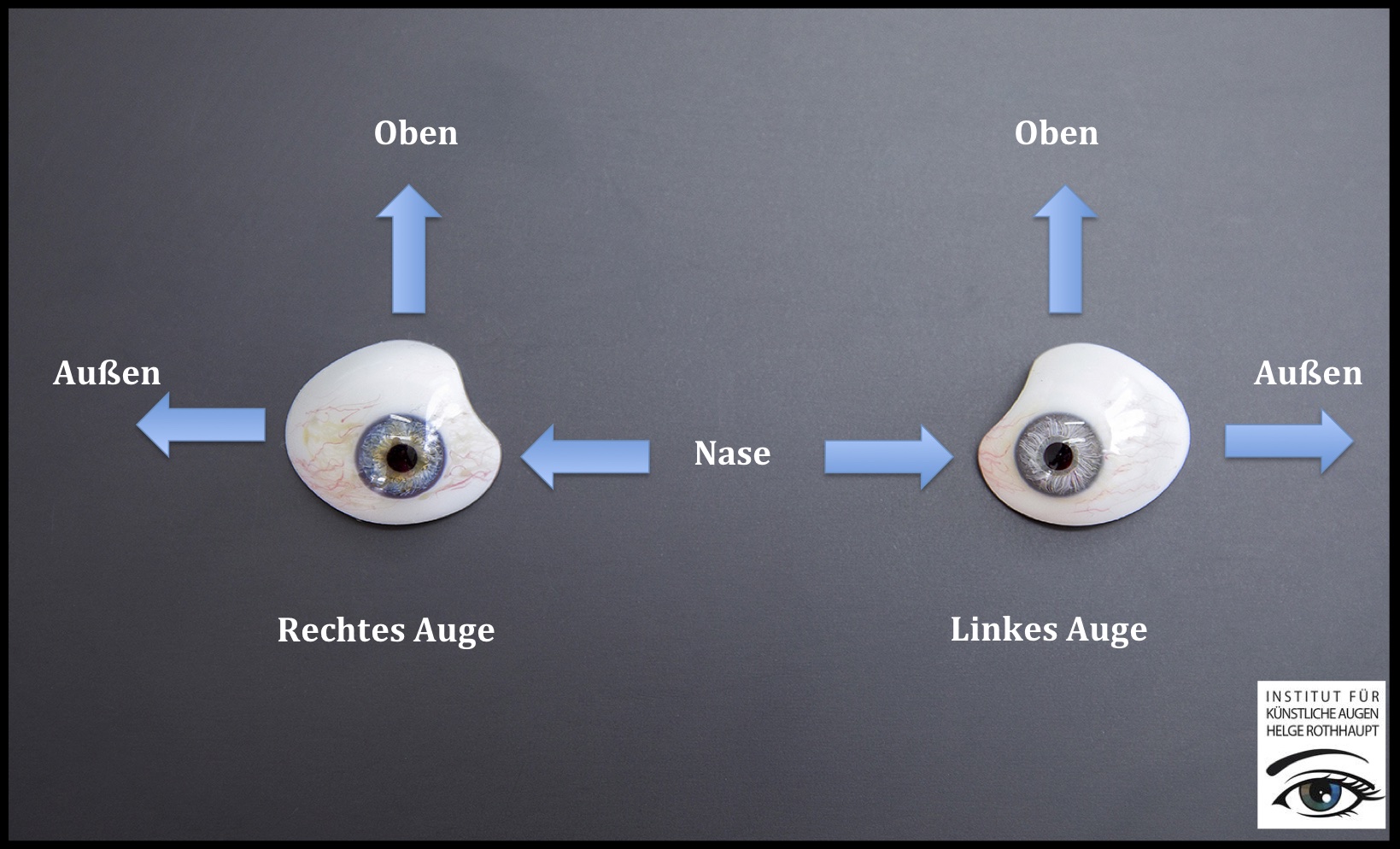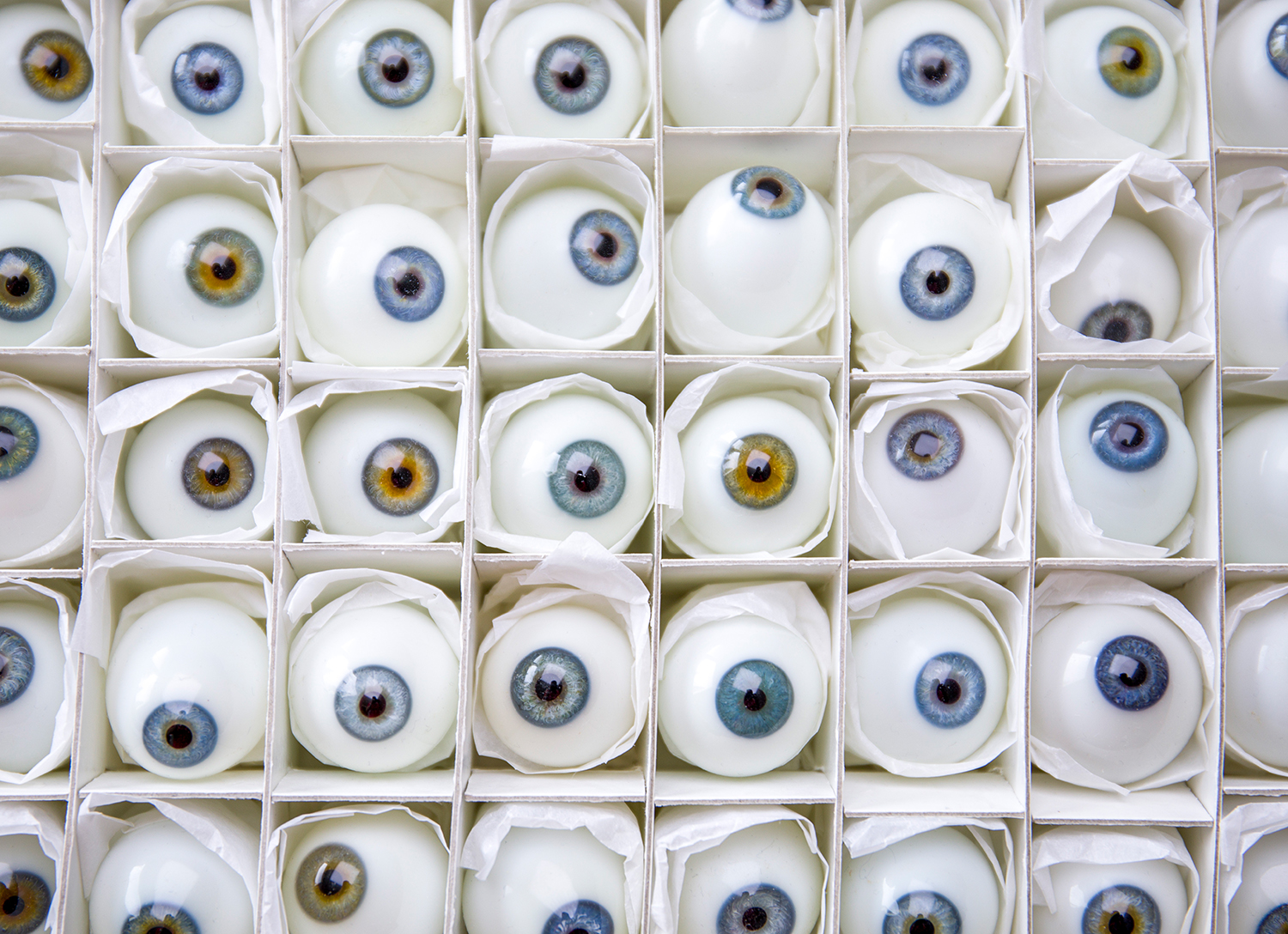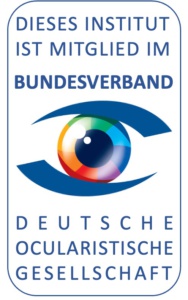Treatment and cleaning of the prosthetic eye
- The prosthesis should be cleaned if necessary. When the blink of an eye works, the prosthesis cleans itself and only needs to be cleaned very rarely.
- Use clear, lukewarm water. We strongly advise against hot water, as extreme temperature fluctuations can affect the durability of the material.
- Treatment with corrosive liquids or cleaning of the surface with hard objects is also prohibited.
- In the case of stubborn dirt, the artificial eye can be soaked in water or saline for about 10 minutes.
- If the artificial eye is not being worn, keep it dry in a closed container.
- The eye prosthesis can generally be worn day and night.
Einsetzen der Augenprothese

- Bei den meisten Prothesen handelt es sich um „Dreiecksformen“ bei welchen der kurze Teil zur Nase zeigt (vgl. Abbildung). Allerdings gibt es auch einige Prothesen die in ihrer Formgebung von diesem Schema abweichen.
- To avoid damaging your prosthesis, the artificial eye should be removed over a soft surface (e.g. a towel on the table) and then reinserted.
- Clean and moisten the prosthesis before inserting it.
- Slide the artificial eye under the raised upper eyelid and hold it in this position.
- A slight pulling down of the lower eyelid allows the artificial eye to slide into its final position behind the lower eyelid.
- If necessary, it is advisable to correct the fit of your prosthesis by gently pressing your finger on the eye so that any air can escape.
Removing the prosthetic eye
- Always think of a soft surface when removing the prosthesis.
- The prosthesis is generally removed looking upwards.
- Press the lower eyelid down until the lower edge of the prosthesis is exposed. Then slide the tip of your index finger under the lower edge of the prosthesis and grasp the artificial eye with your middle finger to remove it downwards out of the eye socket.
- In special cases it may be necessary to use a suction device to remove it. Your ocularist will advise you individually.
- Wenn Sie am Auge reiben oder wischen, dann stets in Richtung zur Nase. Wischen Sie in umgekehrter Richtung – vor allem am Unterlid -, dann könnten Sie die Prothese verdrehen oder herausdrücken.
How long the prosthetic eye is worn
 Color sample
Color sample
- The wear and tear of the artificial eye depends on various factors, e.g. For example: environmental influence, condition of the eye socket, strength of the secretion, poor eyelid closure, etc.
- The eye prosthesis is subject to natural wear and tear due to the effects of the decomposing tear fluid, which limits the wearing time to approx. 1 year. However, if the prosthesis wearer is exposed to increased environmental pollution, the wearing time can be reduced.
- After about 1 year the surface is rough and can cause irritation.
- The first signs are increased lacrimation, secretion and reddening of the mucous membrane.
- A regular check of the eye socket by your ophthalmologist and the annual renewal of the eye prosthesis by the expert ocularist ensures that you can wear your artificial eye without any problems.
- The health insurance company pays the prosthesis once a year in full up to € 10. If the prosthesis breaks, the health insurance company will also pay for a second artificial eye.
Finally, a few pointers
- Your eye prosthesis is a custom-made product that is individually adapted to your eye socket. Should a change (correction) be necessary to your prosthesis, you must contact your ocularist immediately. A correction on an artificial eye is basically only possible if it has not been worn for more than 4 hours, otherwise it can no longer be worked on.
- Always make an appointment in advance for the production of your eye prosthesis.
- It is not possible to repair a damaged prosthesis.
- If the artificial eye should break, please keep all broken pieces as a template for a new production.
- An optimal adjustment of your prosthesis is only possible if you come in person. Your ocularist will advise you in special cases.
